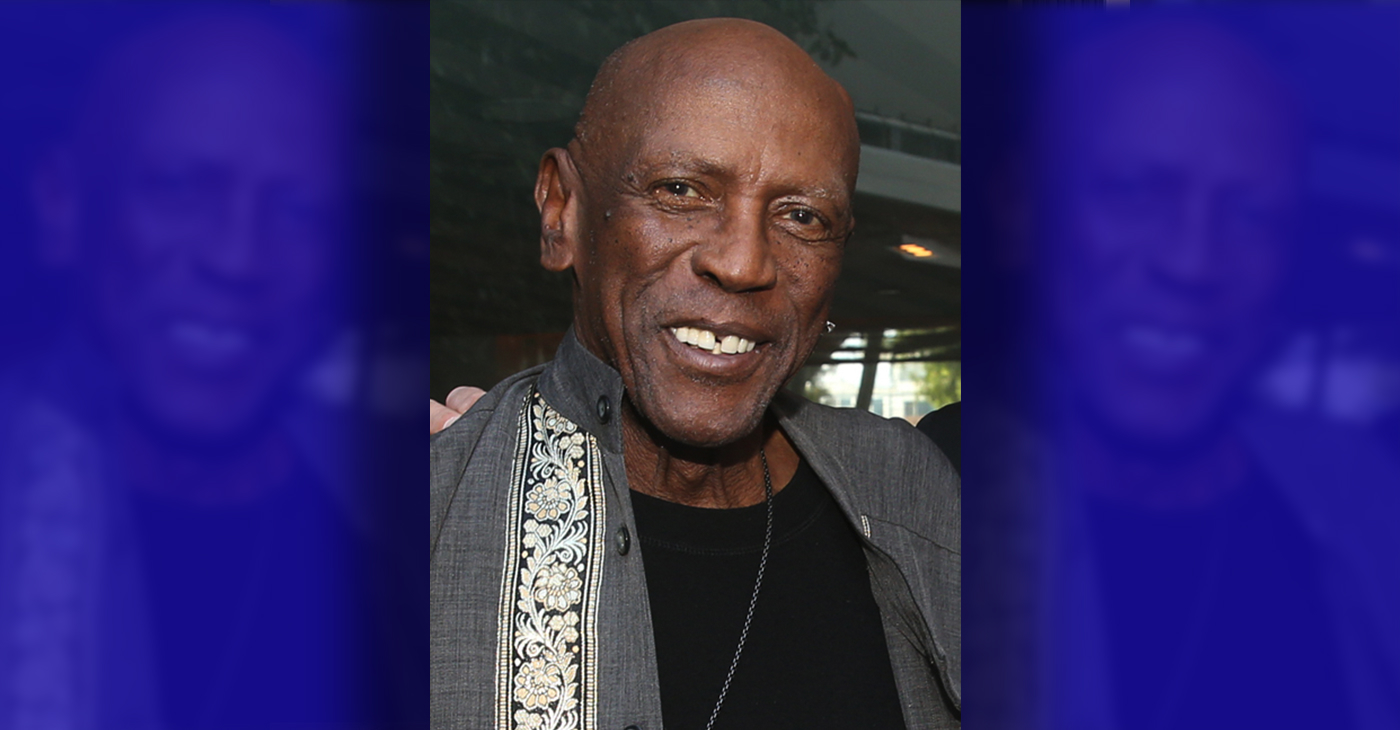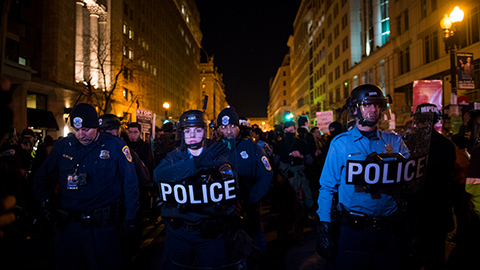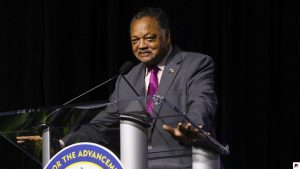#NNPA BlackPress
AUTO REVIEW: 2020 Kia Telluride
NNPA NEWSWIRE — The new Telluride comes in four trim lines: LX, S, EX and SX and they all can be equipped with front-wheel-drive or all-wheel-drive. Its chassis was comprised of 59.4 percent high strength steel and that no doubt was one of the reasons for its rock-solid road performance.
By Frank S. Washington, AboutThatCar.com, NNPA Newswire Contributor
GATEWAY, Colo. – Kia may have hit on the right product at the right time with its all-new 2020 Telluride, a midsize but large three-rowed crossover.
We came here to southwestern Colorado to put the Telluride through its paces. We went down Colorado 141 over the Dolores River which cuts through of course the Dolores River Canyon with its 1,200-foot red granite canyon walls. Look beyond and you can see 12,000-foot mountains all round.
Kudos to Kia for picking this place; they could have found a much easier path. C141 is a narrow two-lane twisting affair. We climbed from our base camp, the Gateway Canyons Resort and Spa which was at 5,000 feet up to Telluride (yep, the vehicle is named after the town) which was at more than 9,000 ft.
But I’m ahead of myself. The Telluride is the first SUV designed by Kia in the U.S. specifically for the U.S. market. It was styled in Irvine, California and will be built at Kia’s assembly plant in West Point, Georgia.
It is indeed the company’s new flagship and they wanted it to be bold and boxy; their words not mine. It is the largest Kia ever built and it can seat seven or eight passengers, depending on whether the second row has captain’s seats or a bench seat.
The Telluride had a long broad hood. The design made the tiger grille wider and taller. Dual headlights were stacked; it had inverted “L” taillights with LED stripes. The windshield was upright and the sides were smooth but bulging and that conveyed strength. And there were elongated nameplates on the edge of the hood and on the lip of the liftgate.
This Kia was the real deal. It had skid plates with twin exhaust tips that let you know it can go off-road. Grab handles were integrated into the center console for such occasions. I passed up the off-road course in favor of pushing back to basecamp.
Under the hood was a 3.8-liter direct injection V6 that made 291 horsepower and 262 pound-feet of torque at 5,600 rpm. This engine was mated to an eight-speed automatic transmission. It is the only engine available and it gets 20 mpg in the city, 26 mpg on the highway and 23 mpg combined for front wheel drive. All-wheel-drive gets 19 mpg in the city, 24 mpg on the highway and 21 mpg combined.
This engine is why I first thought they could have picked a better place for the Telluride’s national launch. Any engine will lose horsepower with altitude, especially if is not getting forced oxygen as in a turbocharger of supercharger. A couple of times the Telluride’s engine worked hard as we climbed a particularly steep stretch of road. But to be fair, on a straightaway with enough distance, and there were not that many, the pedal got pushed to the metal and our Telluride got up to 120 mph before we let up. Power test passed!
And while I’m at it, the Telluride’s handling was spot on. I thought steering was a little loose, but the sport utility went where we pointed it without a lot of deviation. What’s more, for a vehicle that weighed more than two-tons, the suspension prevented a lot of sway and yaw.
The 2020 Telluride had an independent front suspension with MacPherson struts, coil springs and stabilizer bar. In the rear, it had an independent self-leveling multi-link suspension with stabilizer bar. The ride height was automatically calibrated depending on load.
My point is the Telluride was rock solid on the road. There wasn’t any bodyroll that I remember, the nose didn’t rise up under hard acceleration nor did it dip during hard braking. There was a lot of that as we came up on curves sooner than expected.
Its cabin was wide. There was no center stack. Kia was one of the earliest automakers to emphasize horizontal interior layouts. And it really looked good in the Telluride. Plush leather seats were comfortable and the wood and metal trim which looked great and had some grainy texture wasn’t wood or metal. It was a proprietary process that really worked.
The new Telluride comes in four trim lines: LX, S, EX and SX and they all can be equipped with front-wheel-drive or all-wheel-drive. Its chassis was comprised of 59.4 percent high strength steel and that no doubt was one of the reasons for its rock-solid road performance.
There was a choice of four drive modes: smart, eco, sport and comfort which modified the settings for the powertrain, drivetrain and steering. In addition to the four regular drive modes in FWD, Kia said the AWD model owners can opt for snow and AWD lock too. Drive on demand will distribute torque between front and rear wheels depending on driving conditions.
During normal driving in eco and comfort modes the system delivers from 20 to 35 percent of the torque to the rear wheels. In snow, smart and sport the system delivers power evenly to all four wheels. Oh, the Telluride can tow up to 5,000 lbs. too.
Got to report that the navigation system in the first Telluride we tested did not work. These were early production models thus, they were ready for sale. We swapped with an internal who got the system to work by rebooting it. I don’t know what that took but all I can say is that it is not unusual for a computer to need rebooting but it’s not good either. The competition is way too good for even minor glitches; that’s Kia’s challenge with the launch of the Telluride which is currently on sale; don’t get tripped up by the small stuff.
The automaker has stocked the Telluride with a bunch of creature comforts and driver, as well as safety, assists.
Blind spot collision avoidance assist will track lane changes and if it detects a vehicle in the Telluride’s blind spot will apply brakes to the front wheel on the opposite side.
Rear cross traffic collision avoidance will also apply brakes to avoid a collision, lane following assist will keep the Telluride in the center of the lane and safe exit assist, if the system detects an object approaching from the rear, it will override attempts to deactivate the electronic child safety lock until the detected object has passed.
The heads-up display has been made more informative. It will provide turn-by-turn navigation, speed, and smart cruise control and blind spot warnings. But polarized sunglasses will still wash it out.
Driver talk uses a microphone to enhance communications with rear occupants in the second and third row. (Think kids.) Quiet mode can cut audio to the second and third row so audio choices of the front passengers can only be heard in that row. (Think adults.)
The rear occupant alert uses ultrasonic sensors designed to detect child or pet movement in the second or third row after the Tellurides doors have been locked. It can issue audible alerts to the driver.
The list of creature comforts is long. A 10-inch infotainment touch screen, 10-speaker premium audio system, surround sound system, Apple CarPlay and Android Auto, a half dozen USB charging ports, and a Bluetooth system that allows two phones to be connected for audio streaming are included.
The Telluride had downhill brake control and hill start assist, smart cruise control with stop and go ability, lane departure warning and tire pressure monitoring.
There was UVO, Kia’s control system for remote start and door lock pre-conditions the cabin temperature, seats and steering wheel before you get in the car.
If the driver does leave someone in the back seat, the vehicle will alert the driver through a cluster message, then through vehicle alarm and then it will send a message to the owner’s smart phone.
Kia said the 2020 Telluride is the largest SUV in its class at 197 inches long with a 114.2-inch wheelbase. It can be shod with either 18-inch or 20-inch wheels. The sculpted rear fascia camouflaged the skid plates nicely; there was 87 cu. ft. of cargo space with the second and third row seats folded and a low and wide cargo door.
They’ve thought of little things like the heated and cooled second row seats and the third-row seat back tilt.
Pricing starts at $32,735 for the LX front-wheel-drive and tops out at $44,535 for the SX all-wheel-drive.
Kia has got the right vehicle to muscle its way into the large midsize utility market. And buyers seem to agree.
Frank S. Washington is editor of AboutThatCar.com
#NNPA BlackPress
Beloved Actor and Activist Louis Cameron Gossett Jr. Dies at 87
NNPA NEWSWIRE — Louis Gossett Jr., the groundbreaking actor whose career spanned over five decades and who became the first Black actor to win an Academy Award as Best Supporting Actor for his memorable role in “An Officer and a Gentleman,” has died. Gossett, who was born on May 27, 1936, in Brooklyn, N.Y., was 87. Recognized early on for his resilience and nearly unmatched determination, Gossett arrived in Los Angeles in 1967 after a stint on Broadway.
The post Beloved Actor and Activist Louis Cameron Gossett Jr. Dies at 87 first appeared on BlackPressUSA.

By Stacy M. Brown
NNPA Newswire Senior National Correspondent
@StacyBrownMedia
Louis Gossett Jr., the groundbreaking actor whose career spanned over five decades and who became the first Black actor to win an Academy Award as Best Supporting Actor for his memorable role in “An Officer and a Gentleman,” has died. Gossett, who was born on May 27, 1936, in Brooklyn, N.Y., was 87. Recognized early on for his resilience and nearly unmatched determination, Gossett arrived in Los Angeles in 1967 after a stint on Broadway.
He sometimes spoke of being pulled over by law enforcement en route to Beverly Hills, once being handcuffed to a tree, which he remembered as a jarring introduction to the racial tensions of Hollywood. In his memoir “An Actor and a Gentleman,” Gossett recounted the ordeal, noting the challenges faced by Black artists in the industry. Despite the hurdles, Gossett’s talent shone brightly, earning him acclaim in groundbreaking productions such as “A Raisin in the Sun” alongside Sidney Poitier. His Emmy-winning portrayal of Fiddler in “Roots” solidified his status as a trailblazer, navigating a landscape fraught with racial prejudice.
According to the HistoryMakers, which interviewed him in 2005, Gossett’s journey into the limelight began during his formative years at PS 135 and Mark Twain Junior High School, where he demonstrated early leadership as the student body president. His passion for the arts blossomed when he starred in a “You Can’t Take It With You” production at Abraham Lincoln High School, catching the attention of talent scouts who propelled him onto Broadway’s stage in “Take A Giant Step.” His stellar performance earned him the prestigious Donaldson Award for Best Newcomer to Theatre in 1952. Though initially drawn to sports, Gossett’s towering 6’4” frame and athletic prowess led him to receive a basketball scholarship at New York University. Despite being drafted by the New York Knicks in 1958, Gossett pursued his love for acting, honing his craft at The Actors Studio under the tutelage of luminaries like John Sticks and Peggy Fury.
In 1961, Gossett’s talent caught the eye of Broadway directors, leading to roles in acclaimed productions such as “Raisin in the Sun” and “The Blacks,” alongside legends like James Earl Jones, Cicely Tyson, Roscoe Lee Brown, and Maya Angelou. Transitioning seamlessly to television, Gossett graced small screens with appearances in notable shows like “The Bush Baby” and “Companions in Nightmare.” Gossett’s silver screen breakthrough came with his role in “The Landlord,” paving the way for a prolific filmography that spanned over 50 movies and hundreds of television shows. From “Skin Game” to “Lackawanna Blues,” Gossett captivated audiences with his commanding presence and versatile performances.
However, his portrayal of “Fiddler” in Alex Haley’s groundbreaking miniseries “Roots” earned Gossett critical acclaim, including an Emmy Award. The HistoryMakers noted that his golden touch extended to the big screen, where his role as Sergeant Emil Foley in “An Officer and a Gentleman” earned him an Academy Award for Best Supporting Actor, making him a trailblazer in Hollywood history.
Beyond the glitz and glamour of Hollywood, Gossett was deeply committed to community activism. In 1964, he co-founded a theater group for troubled youth alongside James Earl Jones and Paul Sorvino, setting the stage for his lifelong dedication to mentoring and inspiring the next generation. Gossett’s tireless advocacy for racial equality culminated in the establishment of Eracism, a nonprofit organization dedicated to combating racism both domestically and abroad. Throughout his illustrious career, Gossett remained a beacon of strength and resilience, using his platform to uplift marginalized voices and champion social change. Gossett is survived by his children, Satie and Sharron.
The post Beloved Actor and Activist Louis Cameron Gossett Jr. Dies at 87 first appeared on BlackPressUSA.
#NNPA BlackPress
COMMENTARY: D.C. Crime Bill Fails to Address Root Causes of Violence and Incarceration
WASHINGTON INFORMER — The D.C. crime bill and so many others like it are reminiscent of the ‘94 crime bill, which produced new and harsher criminal sentences, helped deploy thousands of police and surveilling methods in Black and brown communities, and incentivized more states to build prisons through a massive infusion of federal funding. While it is not at the root of mass incarceration, it significantly accelerated it, forcing a generation of Black and brown families into a never-ending cycle of state-sanctioned violence and incarceration.
The post COMMENTARY: D.C. Crime Bill Fails to Address Root Causes of Violence and Incarceration first appeared on BlackPressUSA.

By Kaili Moss and Jillian Burford | Washington Informer
Mayor Bowser has signed the “Secure DC” omnibus bill passed by the D.C. Council last month. But we already know that this bill will be disastrous for all of D.C., especially for Black and brown residents.
While proponents claim that this legislation “will make D.C. residents safer and more secure,” it actually does nothing to address the root of the harm in the first place and instead maintains a cycle of violence, poverty, and broken community ties. The omnibus bill calls for increased surveillance, drug-free zones, and will expand pre-trial detention that will incarcerate people at a significantly higher rate and for an indeterminate amount of time before they are even tried. This bill will roll back decades of nationwide policy reform efforts and initiatives to keep our communities safe and whole, which is completely contradictory to what the “Secure” D.C. bill claims it will do.
What is unfolding in Washington, D.C., is part of a dangerous national trend. We have seen a resurrection of bad crime bills in several jurisdictions across the country — a phenomenon policy experts have named “zombie laws,” which are ineffective, costly, dangerous for communities of color and, most importantly, will not create public safety. Throwing more money into policing while failing to fund preventative measures does not keep us safe.
The D.C. crime bill and so many others like it are reminiscent of the ‘94 crime bill, which produced new and harsher criminal sentences, helped deploy thousands of police and surveilling methods in Black and brown communities, and incentivized more states to build prisons through a massive infusion of federal funding. While it is not at the root of mass incarceration, it significantly accelerated it, forcing a generation of Black and brown families into a never-ending cycle of state-sanctioned violence and incarceration. Thirty years later, despite spending billions each year to enforce these policies with many of these provisions remaining in effect, it has done very little to create long-term preventative solutions. Instead, it placed a permanent moving target on the backs of Black people, and the D.C. crime bill will do the same.
The bill calls for more pretrial detention. When our loved ones are held on pretrial detention, they are held on the presumption of guilt for an indeterminate amount of time before ever seeing a judge, which can destabilize people and their families. According to experts at the Malcolm Weimer Center for Social Policy at Harvard University, just one day in jail can have “devastating consequences.” On any given day, approximately 750,000 people are held in jails across the nation — a number that beats our nation’s capital population by about 100,000. Once detained, people run the risk of losing wages, jobs, housing, mental and health treatments, and time with their families. Studies show that pretrial detention of even a couple of days makes it more likely for that person to be rearrested.
The bill also endangers people by continuing a misguided and dangerous War on Drugs, which will not get drugs off the street, nor will it deter drug use and subsequent substance use disorders (SUDs). Drug policies are a matter of public health and should be treated as such. Many states such as Alabama, Iowa and Wisconsin are treating the current fentanyl crisis as “Crack 2.0,” reintroducing a litany of failed policies that have sent millions to jails and prisons instead of prioritizing harm reduction. Instead, we propose a simple solution: listen to members of the affected communities. Through the Decrim Poverty D.C. Coalition, community members, policy experts and other stakeholders formed a campaign to decriminalize drugs and propose comprehensive legislation to do so.
While there are many concerning provisions within the omnibus bill, car chases pose a direct physical threat to our community members. In July 2023, NBC4 reported that the D.C. Council approved emergency legislation that gave MPD officers the ability to engage in vehicular pursuits with so-called “limited circumstances.” Sgt. Val Barnes, the head of MPD’s carjacking task force, even expressed concern months before the decision, saying, “The department has a pretty strict no-chase policy, and obviously for an urban setting and a major metropolitan city, that’s understandable.” If our law enforcement officers themselves are operating with more concern than our elected officials, what does it say about the omnibus bill’s purported intention to keep us safe?
And what does it mean when the risk of bodily harm is posed by the pursuit itself? On Saturday, Feb. 10, an Eckington resident had a near-miss as a stolen car barreled towards her and her dog on the sidewalk with an MPD officer in pursuit. What responsibility does the city hold if this bystander was hit? What does restitution look like? Why are our elected officials pushing for MPD officers to contradict their own policies?
Just a few summers ago during the uprisings of 2020, we saw a shift in public perspectives on policing and led to legislation aimed at limiting police power after the highly-publicized murders of loved ones Breonna Taylor and George Floyd — both victims of War on Drugs policing and the powers gained from the ’94 crime bill. And yet here we are. These measures do not keep us safe and further endanger the health of our communities. Studies show that communities that focus on harm reduction and improving material conditions have a greater impact on public safety and community health. What’s missing in mainstream conversations about violent crime is the violence that stems from state institutions and structures that perpetuate racial and class inequality. The people of D.C. deserve to feel safe, and that includes feeling safe from the harms enacted by the police.
Kaili Moss is a staff attorney at Advancement Project, a national racial justice and legal organization, and Jillian Burford is a policy organizer at Harriet’s Wildest Dreams.
The post COMMENTARY: D.C. Crime Bill Fails to Address Root Causes of Violence and Incarceration first appeared on BlackPressUSA.
#NNPA BlackPress
Mayor, City Council President React to May 31 Closing of Birmingham-Southern College
THE BIRMINGHAM TIMES — “This is a tragic day for the college, our students, our employees, and our alumni, and an outcome so many have worked tirelessly to prevent,” Rev. Keith Thompson, chairman of the BSC Board of Trustees said in an announcement to alumni. “We understand the devastating impact this has on each of you, and we will now direct our efforts toward ensuring the smoothest possible transition for everyone involved.”
The post Mayor, City Council President React to May 31 Closing of Birmingham-Southern College first appeared on BlackPressUSA.

By Barnett Wright | The Birmingham Times
Birmingham-Southern College will close on May 31, after more than a century as one of the city’s most respected institutions.
“This is a tragic day for the college, our students, our employees, and our alumni, and an outcome so many have worked tirelessly to prevent,” Rev. Keith Thompson, chairman of the BSC Board of Trustees said in an announcement to alumni. “We understand the devastating impact this has on each of you, and we will now direct our efforts toward ensuring the smoothest possible transition for everyone involved.”
There are approximately 700 students enrolled at BSC this semester.
“Word of the decision to close Birmingham Southern College is disappointing and heartbreaking to all of us who recognize it as a stalwart of our community,” Birmingham Mayor Randall Woodfin said in a statement. “I’ve stood alongside members of our City Council to protect this institution and its proud legacy of shaping leaders. It’s frustrating that those values were not shared by lawmakers in Montgomery.”
Birmingham City Council President Darrell O’Quinn said news of the closing was “devastating” on multiple levels.
“This is devastating for the students, faculty members, families and everyone affiliated with this historic institution of higher learning,” he said. “It’s also profoundly distressing for the surrounding community, who will now be living in close proximity to an empty college campus. As we’ve seen with other institutions that have shuttered their doors, we will be entering a difficult chapter following this unfortunate development … We’re approaching this with resilience and a sense of hope that something positive can eventually come from this troubling chapter.”
The school first started as the merger of Southern University and Birmingham College in 1918.
The announcement comes over a year after BSC officials admitted the institution was $38 million in debt. Looking to the Alabama Legislature for help, BSC did not receive any assistance.
This past legislative session, Sen. Jabo Waggoner sponsored a bill to extend a loan to BSC. However, the bill subsequently died on the floor.
Notable BSC alumni include former New York Times editor-in-chief Howell Raines, former U.S. Sen. Howell Heflin and former Alabama Supreme Court Chief Justice Perry O. Hooper Sr.
This story will be updated.
The post Mayor, City Council President React to May 31 Closing of Birmingham-Southern College first appeared on BlackPressUSA.
-

 Activism4 weeks ago
Activism4 weeks agoOakland Post: Week of March 20 – 26, 2024
-

 #NNPA BlackPress3 weeks ago
#NNPA BlackPress3 weeks agoCOMMENTARY: D.C. Crime Bill Fails to Address Root Causes of Violence and Incarceration
-

 #NNPA BlackPress3 weeks ago
#NNPA BlackPress3 weeks agoMayor, City Council President React to May 31 Closing of Birmingham-Southern College
-

 #NNPA BlackPress4 weeks ago
#NNPA BlackPress4 weeks agoFrom Raids to Revelations: The Dark Turn in Sean ‘Diddy’ Combs’ Saga
-

 #NNPA BlackPress4 weeks ago
#NNPA BlackPress4 weeks agoCOMMENTARY: Lady Day and The Lights!
-

 Activism3 weeks ago
Activism3 weeks agoOakland Post: Week of March 27 – April 2, 2024
-

 #NNPA BlackPress4 weeks ago
#NNPA BlackPress4 weeks agoBaltimore Key Bridge Catastrophe: A City’s Heartbreak and a Nation’s Alarm
-

 #NNPA BlackPress4 weeks ago
#NNPA BlackPress4 weeks agoBaltimore’s Key Bridge Struck by Ship, Collapses into Water










































